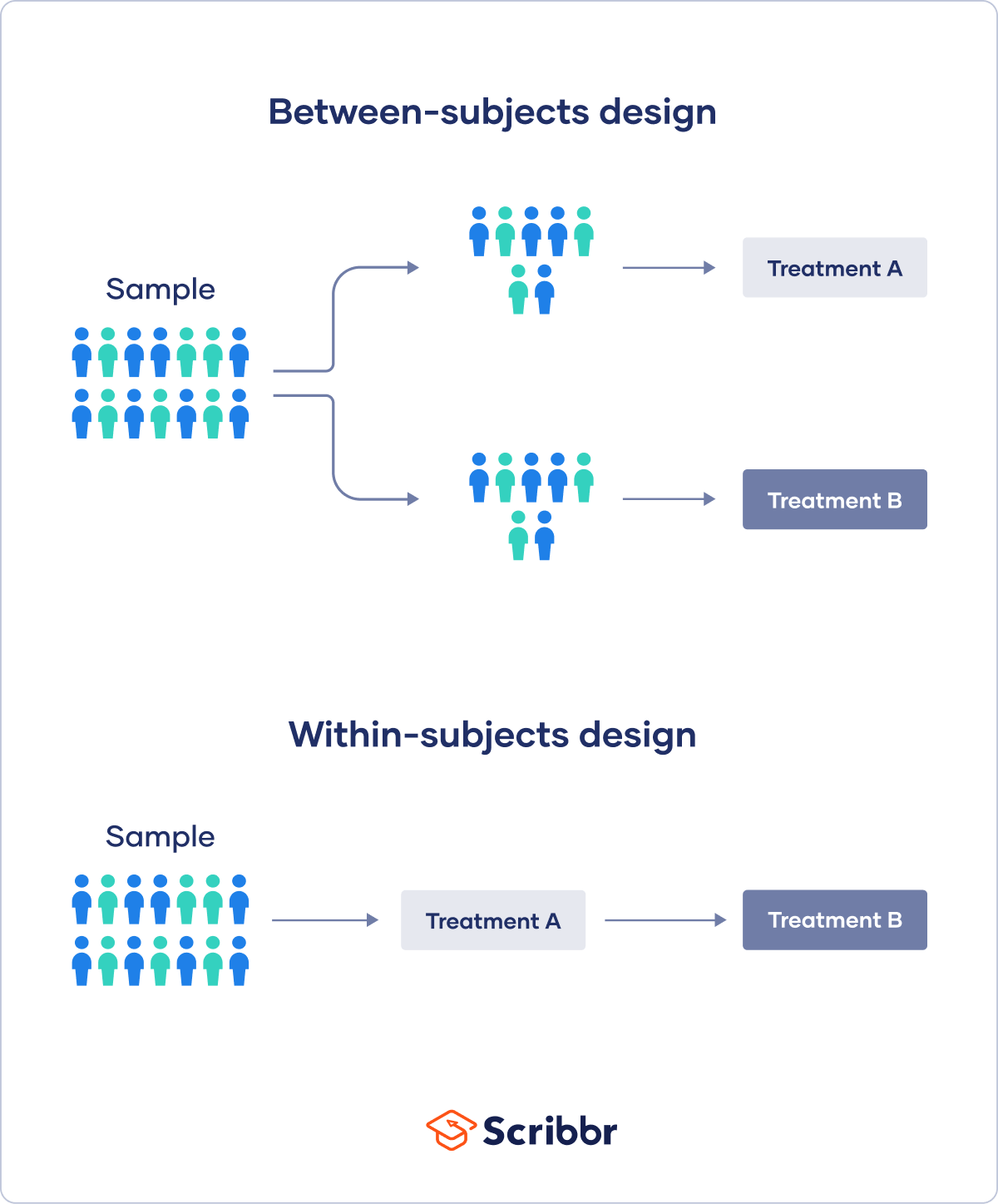Objective To describe an approach for reporting master protocol research programs MPRPs that is consistent with existing good reporting practices and that uses structured information to convey the overall master protocol and design of each substudy. 2 Importantly researchers need to be aware of the biases that may occur in quasi-experimental studies that may lead to.

Confounding Variables Can Bias Your Results Statistics By Jim
This is common in medical research where failed trials may lead to a patients death or a deteriorating health condition.

. Some other non-random method is used to assign subjects to groups. However some experiments use a within-subjects design to test treatments without a control group. Experimental Design Summary Experimental Design Summary Experimental design refers to how participants are allocated to the different conditions or IV levels in an experiment.
The researcher usually designs the treatment. The researcher often does not have control over the treatment. Exposure and non-exposure to the treatment condition of the independent variable.
A true experiment aka. Experimental research results are not descriptive. A quasi experimental design lacks random assignments.
There is a practical challenge to quasi-experimental studies that may arise when some patients or hospital units are encouraged to introduce an intervention while other units retain the standard of care and may feel excluded. The replication crisis also called the replicability crisis and the reproducibility crisis is an ongoing methodological crisis in which it has been found that the results of many scientific studies are difficult or impossible to reproduceBecause the reproducibility of empirical results is an essential part of the scientific method such failures undermine the credibility of theories. A full factorial design may also be called a fully crossed designSuch an experiment allows the investigator to study the effect of.
True experimental design Quasi-experimental design. Experimental and control groups. This is an overview of Campbells 40-year career and his work.
Identify some of the threats to internal validity associated with each of these designs. Recall that when participants in a between-subjects experiment are randomly assigned to conditions the resulting groups are likely to be quite similar. The experimental group is the group exposed to the treatment condition while the.
Methodology and epistemology for social science. Therefore the independent variable can be manipulated prior to measuring the dependent variable which may lead to confounding. In these designs you usually compare one groups outcomes before and after a treatment instead of comparing outcomes.
In statistics a full factorial experiment is an experiment whose design consists of two or more factors each with discrete possible values or levels and whose experimental units take on all possible combinations of these levels across all such factors. A classic overview of research designs. Response bias can also be supplied by the subject of the conversation.
Different participants are used in each condition of the independent variable. Gustav Fechner 1801-1887 who helped develop procedures for measuring sensations according to the size of the stimulus. QEDs test causal hypotheses but in lieu of fully randomized assignment of the intervention seek to define a comparison group or time period that reflects the counter-factual ie outcomes if the intervention had not been implemented QEDs seek to identify a comparison group or time period that is as similar as possible to the treatment group or time.
The researcher randomly assigns subjects to control and treatment groups. Kerry Tanner in Research Methods for Students Academics and Professionals Second Edition 2002. There are three types.
Describe the different types of nonequivalent groups quasi-experimental designs. University of Chicago Press. Franz Brentano 1838-1917 who called for a combination of first-person and.
It is very risky and may have ethical complications that cannot be ignored. Experimental research involves the differentiation of two basic conditions. A controlled experiment always includes at least one control group that doesnt receive the experimental treatment.
Chang et al 2010 investigated information bias in the self-reporting of personal computer use within a study looking at computer use and musculoskeletal symptoms. Experimental and quasi-experimental designs for research. It is a probable bias within observational studies particularly in those with retrospective designs but can also affect experimental studies.
For the sake of our lesson and all future lessons we will be using research methods where random sampling and experimental designs are used. Hermann von Helmholtz 1821-1894 who analyzed philosophical assumptions through research in an attempt to arrive at scientific conclusions. Data sources ClinicalTrialsgov trial registry.
Independent measures between-groups.

Middle School Science Christmas Review Middle School Science Middle School Biology Middle School Science Class

Outsmart Gender Bias Through Design Leadership Values Innovative Services Gender Equity

Between Subjects Design Examples Pros Cons

Experimental Design Teaching The Design Of Experiments And Letting Students Develop Their Own Questions And Hypothes Scientific Method Steps Hypothesis Design

Eksperiment Nauchen Metod Teoriya Metodologiya Educacion Investigacion Experimental


0 comments
Post a Comment